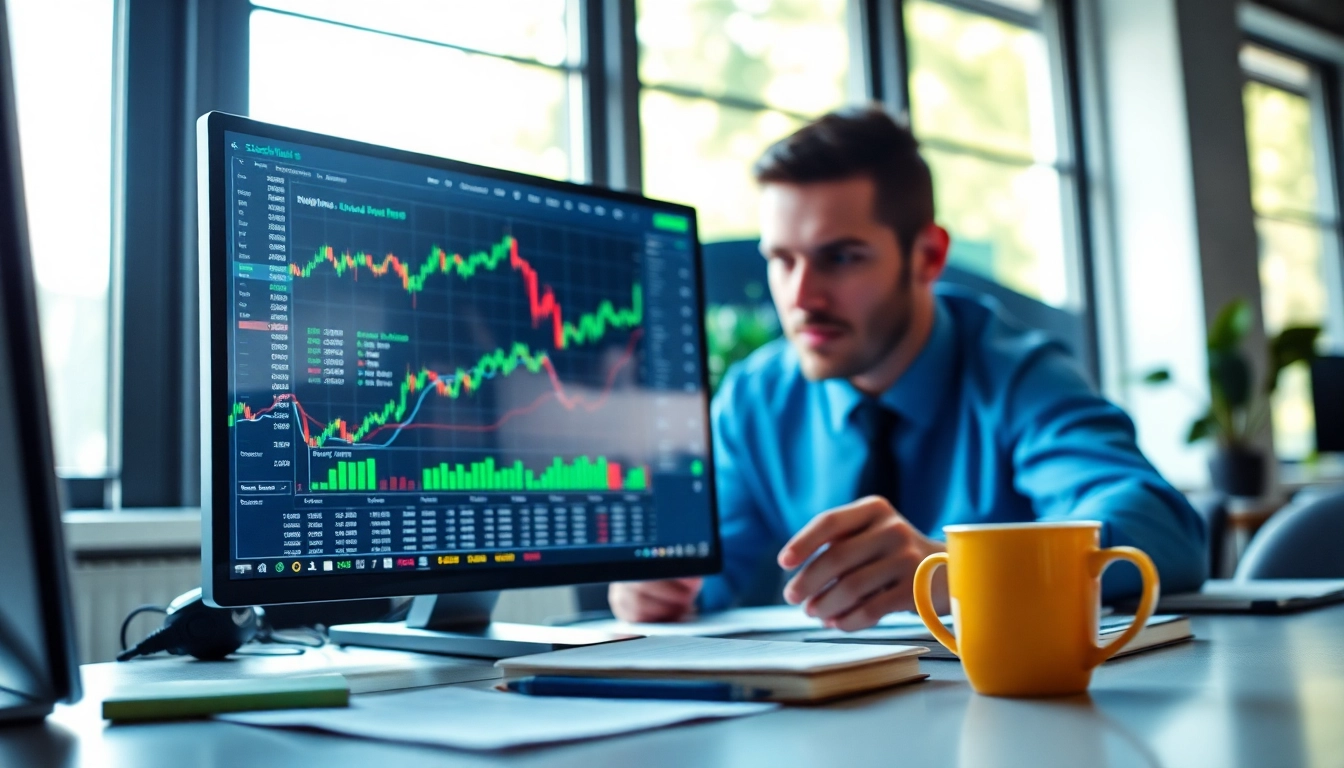Understanding Trade Futures and Their Importance
In the ever-evolving landscape of global finance, trade futures have emerged as a vital tool for both investors and businesses looking to hedge risks and speculate on price movements. Futures contracts allow traders to agree on the delivery of an asset at a predetermined price at a specific date in the future. This article delves into the significance of trade futures, their benefits, common misconceptions, and more, providing essential insights for anyone looking to understand this financial instrument profoundly.
What Are Trade Futures?
Trade futures are financial agreements to buy or sell an asset—such as commodities, currencies, or financial instruments—at a predetermined future date and price. These contracts are standardized and traded on exchanges like the Chicago Mercantile Exchange (CME) and the Intercontinental Exchange (ICE). The participants in these contracts can be speculators aiming to profit from price changes or hedgers looking to mitigate risk associated with fluctuating market prices.
Key Benefits of Trade Futures
- Leverage: Futures trading allows participants to control large positions with a comparatively small amount of capital. Traders can use margin to leverage their investments, which can amplify profits.
- Liquidity: Futures markets are generally very liquid, meaning that traders can enter and exit positions relatively quickly without significantly affecting the market price.
- Price Discovery: The trading of futures contracts provides valuable information regarding the future prices of assets, helping traders and businesses make informed decisions.
- Hedging Capability: Companies can use futures contracts to hedge against price volatility—locking in prices to manage budgetary concerns for commodities and raw materials.
- Diverse Market Options: Futures are available for a variety of asset classes, including commodities like oil, gold, and wheat, as well as financial instruments like indices and currencies, offering traders multiple avenues for investment.
Common Misconceptions About Trade Futures
Despite their benefits, trade futures are often misunderstood. Here are some common misconceptions:
- Only for Professionals: Many believe futures trading is reserved for institutional traders or seasoned professionals, but individual traders can effectively participate in these markets with the right education and resources.
- The Risk is Too High: While risks exist, successful futures trading involves understanding market dynamics and employing appropriate risk management strategies.
- They Are Only for Speculation: Although many use them for speculation, futures contracts also serve as critical hedging tools for businesses, helping stabilize prices amidst uncertainty.
How to Get Started with Trade Futures
Entering the world of trade futures requires a solid foundation in market terminology and practical steps to establish a trading account. Whether you’re looking to speculate or hedge, here’s how to initiate your journey.
Essential Terminology in Trade Futures
Understanding the basic terminology is crucial for navigating futures trading:
- Contract Size: The quantity of the underlying asset that the futures contract represents. For example, one crude oil futures contract typically represents 1,000 barrels of oil.
- Expiration Date: The date on which the futures contract is set to expire, and the underlying asset must be delivered or settled.
- Margin: The funds that must be deposited to open and maintain a futures position, acting as a good-faith deposit for potential losses.
- Open Interest: The total number of outstanding futures contracts that are held by market participants at any given time. This metric helps gauge market interest and liquidity.
- Settlement: The process through which the profit or loss on a futures position is realized, either through physical delivery of the underlying asset or cash settlement.
Selecting the Right Broker for Trading Futures
Choosing a broker is a critical step in your futures trading journey. Consider the following factors when selecting the right broker:
- Regulation: Opt for brokers regulated by recognized authorities such as the Commodity Futures Trading Commission (CFTC) to ensure compliance with industry standards.
- Commission Structure: Evaluate the commission rates for trading futures and whether they fit your trading style—flat rates may benefit frequent traders, while others might prefer variable rates.
- Trading Platform: Ensure that the broker offers a robust trading platform with necessary tools for analysis, charting, and order execution.
- Customer Service: Reliable customer support is essential, especially for addressing issues that may arise during trading or account management.
- Educational Resources: Look for brokers that provide educational materials, webinars, and trading simulations to help beginners grasp the complexities of futures trading.
Creating a Futures Trading Account: Step-by-Step
Once you’ve selected a broker, follow these steps to create your futures trading account:
- Complete the Application Form: Fill out the online application form, providing personal information, financial details, and trading experience.
- Submit Required Documents: Provide identification documents, proof of address, and any other necessary paperwork as mandated by the broker.
- Fund Your Account: Deposit the minimum margin required by the broker to start trading. Ensure you understand the funding methods available.
- Review the Agreement: Familiarize yourself with the broker’s terms and conditions, trading policies, and fee structure.
- Access Trading Tools: Familiarize yourself with the broker’s trading platform and tools, linking your new account to any relevant market analysis software.
Analyzing Market Trends for Trade Futures
Effective futures trading hinges on a thorough analysis of market trends. By examining both technical and fundamental factors, traders can develop strategies to enhance their success rate.
Technical Analysis Techniques for Trade Futures
Technical analysis involves assessing historical price data to project future movements. Key techniques include:
- Trend Lines: Drawing trend lines on price charts helps identify bullish or bearish trends, guiding trading decisions based on prevailing market direction.
- Support and Resistance Levels: Identifying key levels where the price tends to halt or reverse allows traders to set entry and exit points effectively.
- Chart Patterns: Recognizing patterns like head-and-shoulders, flags, and triangles can indicate potential future price movements, assisting traders in predicting market behavior.
- Indicators: Utilizing technical indicators such as moving averages, Relative Strength Index (RSI), and Fibonacci retracement can enhance decision-making by providing insights into market momentum and potential reversals.
Understanding Price Charts and Indicators
Price charts display the historical pricing data of futures contracts. Here’s how to interpret them:
- Candlestick Charts: These charts illustrate price movements using candlesticks, which depict the open, close, high, and low prices over a specific period. Analyzing patterns and candle formations can unveil trader sentiment.
- Time Frames: Select different time frames (daily, weekly, or intraday) based on your trading strategy. Day traders often rely on short time frames to make rapid decisions, while longer-term traders may focus on daily or weekly charts.
- Volume Analysis: Examining trading volume alongside price can indicate the strength of a price move. Increasing volume during a price rise may signal buyer interest, while a price drop with low volume might not suggest a reversal.
Using Fundamental Analysis in Trade Futures
While technical analysis focuses on historical price data, fundamental analysis examines economic factors that can influence the price of futures contracts. Key components include:
- Economic Indicators: Data such as employment figures, GDP growth, and consumer confidence can affect market sentiment and drive commodity prices.
- Supply and Demand: Analyzing factors that influence supply—such as weather conditions affecting agricultural commodities—and factors affecting demand can provide insights into market trends.
- Geopolitical Events: Political stability, trade treaties, and conflicts can have profound impacts on commodity markets. Traders must remain aware of how global events may influence their positions.
Effective Strategies for Trading Futures
Implementing sound trading strategies can greatly increase a trader’s chance for success in the futures market. Below are strategies to consider when navigating trade futures.
Risk Management Techniques in Trade Futures
Risk management is pivotal in protecting trades from unforeseen market volatility. Techniques include:
- Setting Stop-Loss Orders: These orders automatically sell a futures contract when it reaches a certain price, helping to limit potential losses.
- Position Sizing: Only risk a small percentage of your account on any given trade. This strategy helps prevent significant losses that can impact overall capital.
- Diversification: Avoid concentrating all investments in a single asset class. Spread your investments across different futures contracts to mitigate risks.
Popular Trading Strategies for Success
Here are some well-known trading strategies employed in futures trading:
- Trend Following: Traders analyze and follow prevailing trends, entering long positions in uptrends and short positions in downtrends, capitalizing on sustained movements.
- Range Trading: This strategy involves identifying levels of support and resistance within which prices fluctuate, allowing traders to buy low and sell high.
- Breakout Strategies: Traders aim to enter positions when the price breaks through established resistance or support levels, anticipating significant price movements.
Utilizing Diversification in Trade Futures
Diversification in futures trading can help mitigate risks and improve overall performance. Consider the following approaches:
- Asset Class Diversification: Engage in trading several different types of futures contracts. For example, pairing commodities with financial futures can help reduce sector-specific risks.
- Geographic Diversification: Invest in futures across various geographical regions to minimize risks associated with local economic conditions.
- Strategy Diversification: Implement multiple trading strategies, such as combining trend-following with range trading, to capture market opportunities in different conditions.
Measuring Performance and Adjusting Strategies
Evaluating your trading performance is essential to determine the effectiveness of your strategies. Continually measuring and adjusting your approach can lead to long-term success.
Key Performance Metrics for Trade Futures
Traders should assess various performance metrics to gain insight into their trading efficacy:
- Win Rate: The percentage of winning trades compared to total trades. This metric helps evaluate overall trading strategy effectiveness.
- Risk-to-Reward Ratio: This ratio indicates the potential profit for every dollar risked. A favorable ratio (often higher than 1:2) suggests that the potential payout justifies the risk taken.
- Maximum Drawdown: Maximum drawdown represents the largest peak-to-trough loss experienced during a trading period, helping assess risk tolerance.
- Return on Investment (ROI): Calculating ROI provides insight into the profitability of trades relative to capital invested.
How to Evaluate Your Trading Results
To evaluate your trading results effectively, maintain a trading journal. Document every trade’s details, including entry and exit points, reasoning behind the trade, and outcomes. Analyze this data periodically to identify patterns in your performance—both strengths and weaknesses. This practice will help refine your trading skills and increase your success over time.
Adjusting Strategies Based on Market Changes
Markets can be unpredictable, and strategies must evolve. Here’s how to adjust your approach:
- Stay Informed: Regularly consume market news, updates, and analysis. Understand macroeconomic indicators that may affect performance.
- Adapt Technical Analysis: If market dynamics shift, re-evaluate technical indicators and adjust your strategy to align with new trends.
- Continue Learning: Remain open to new strategies and approaches; either through trading courses, webinars, or mentorship. The financial landscape is consistently changing, and so should your methods.
In conclusion, mastering the essentials of trade futures involves understanding market dynamics, risk management techniques, and effective trading strategies. By maintaining vigilance and adapting to changes, traders can harness the full potential of futures trading for success.



